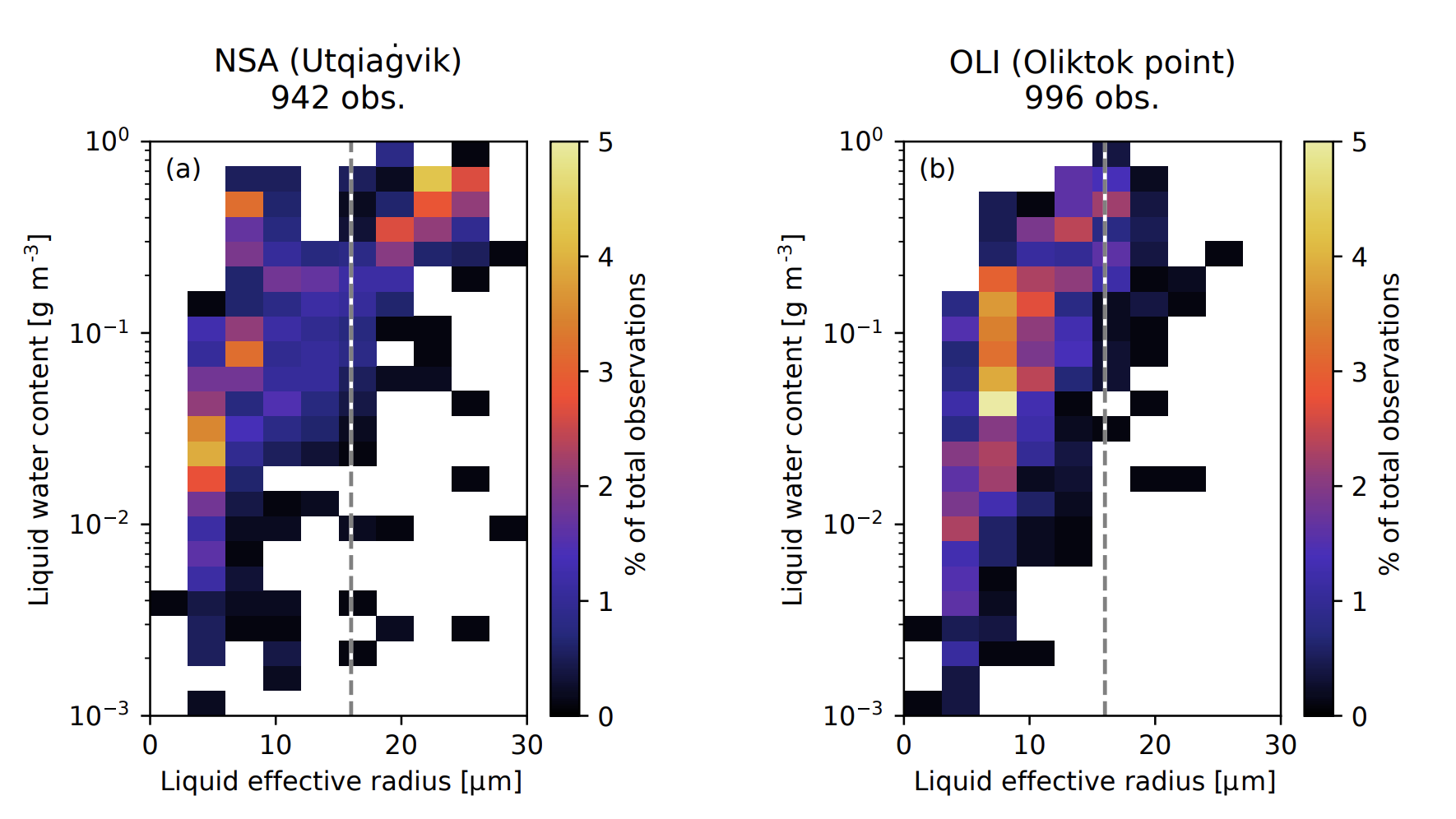Local air pollution on Alaska's North Slope changes cloud properties
Submitter:
Maahn, Maximilian — Leipzig University
de Boer, Gijs — University of Colorado Boulder
Area of research:
Cloud-Aerosol-Precipitation Interactions
Journal Reference:
Science
Local air pollution on Alaska's North Slope appears to affect liquid clouds that form downwind, leading to smaller droplets less likely to fall as drizzle or rain, according to new research. Clouds in the region can either cool or warm the surface, depending on their specific properties and season. In the summertime, arctic clouds generally cool the surface by reflecting sunlight, but changing droplet size may alter the degree of that cooling.
Impact
Because the Arctic is warming more rapidly than the rest of the planet, better understanding those clouds—and the pollution that affects them—is crucial to understanding future global climate change.
Summary
In this study, we compared liquid-containing clouds in two coastal regions in Alaska: Oliktok Point, which is close to the Prudhoe Bay oilfield, and the more atmospherically pristine Utqiaġvik (formerly called Barrow). Because these two locations are very close geographically and their weather is similar, we were able to investigate how Arctic cloud properties and processes are modified by emissions from the Prudhoe Bay oilfield. For this, we used aircraft observations of the 5th ARM Airborne Carbon Measurements (ARM-ACME V) campaign, which included nearly 40 research flights from June to September, 2015. Even though the campaign's main mission targeted trace gas emissions from the tundra, the aircraft also included instruments that measured clouds and aerosols. By comparing the atmospheric composition of Oliktok Point, with all its oilfields, and Utqiaġvik, we found more pollution at Oliktok Point. Specifically, there were more than twice as many condensation nuclei and significantly increased black carbon concentrations. We also found that liquid clouds observed at Oliktok Point contained significantly smaller cloud droplets than at Utqiaġvik (see figure). These conditions result in less drizzle and rain formation in the polluted region, which reduced the rain rate there to about one-tenth, and might have an impact on the lifetime of the clouds. The properties of the pollution particles observed near the clouds match those expected from oil production facilities, which makes a connection between the local emissions and the reduced cloud droplet size likely. To further explore this connection, we then used the NOAA-developed HYSPLIT pollution dispersion model. The model tracks how emissions spread, incorporating weather conditions. We found that, indeed, pollution from industrial activities in the Prudhoe Bay region could explain differences in the properties of liquid clouds. In comparison to emissions from forest fires, the observed concentrations related to local pollution are smaller. However, the air on Alaska’s North Slope is still relatively clean and consequently small amounts of pollution can have a demonstrable effect.


